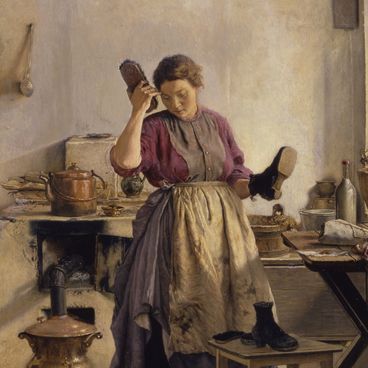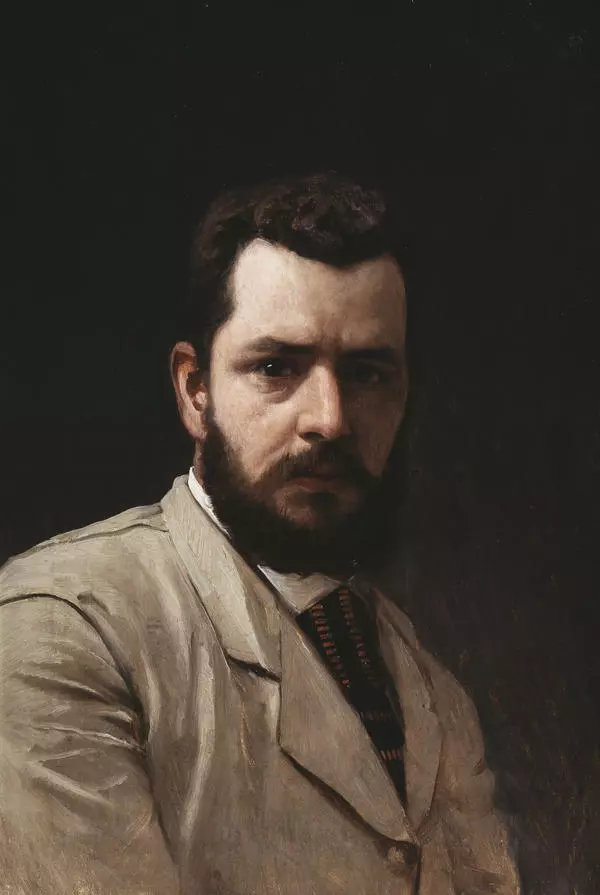Alexander Bryullov was an artist and architect, the elder brother of famous painter Karl Bryullov. He studied ancient architecture, traveled in Italy. Bryullov restored public baths in the ancient Roman city of Pompeii buried by Mount Vesuvius under volcanic ash in the 1st century. As an architect, Bryullov designed buildings in St. Petersburg and other Russian cities. He was involved in the restoration of the Winter Palace after the fire and the construction of Pulkovo Observatory. The artist pursued lithography, a printing technique, where ink is transferred under pressure from a flat printing form to paper. Alexander Bryullov painted watercolor landscapes and portraits of his contemporaries.
Watercolour portrait painting reached its heyday in Russia in the first half of the 19th century. In the 1830s, Bryullov painted mostly small-format chest-high portraits. The artist masterfully conveyed the appearance and personality of his characters, his works include a watercolour portrait of Natalia Goncharova, Alexander Pushkin’s wife, as well as a delicate and exquisite portrait of Countess Natalia Stroganova. Bryullov’s watercolours were popular with Russian aristocrats.
The portrait presented at the exhibition features Alexey Olenin. The artist masterly used the capabilities of the watercolour technique, such as washes, drips and transparent strokes, enabling him to create lyrical images. The watercolour’s characteristic “pearl” touch makes it especially exquisite. The artist’s work of the 1840s, which this watercolour belongs to, was not abundant in portraits, as his activities as an architect and teaching at the Academy of Arts left him little time for creative work. For the most part, he painted portraits of his relatives and close friends.
Aleksey Olenin was a graduate of the Page Corps, a privileged educational institution, and served as a junior captain of the Guards General Staff. He belonged to the group of liberal-minded St. Petersburg officers and was a member of Decembrists’ Union of Welfare. Among the guests, who visited the Olenins’ at their home, were famous writers and composers including Alexander Griboyedov, Mikhail Glinka and Alexander Pushkin. Alexei Olenin was quite an ill-tempered person getting increasingly difficult over the years. His irritability led him to his sad demise: he was killed by his own serfs. They confessed to the crime stating that their master mistreated them.
Watercolour portrait painting reached its heyday in Russia in the first half of the 19th century. In the 1830s, Bryullov painted mostly small-format chest-high portraits. The artist masterfully conveyed the appearance and personality of his characters, his works include a watercolour portrait of Natalia Goncharova, Alexander Pushkin’s wife, as well as a delicate and exquisite portrait of Countess Natalia Stroganova. Bryullov’s watercolours were popular with Russian aristocrats.
The portrait presented at the exhibition features Alexey Olenin. The artist masterly used the capabilities of the watercolour technique, such as washes, drips and transparent strokes, enabling him to create lyrical images. The watercolour’s characteristic “pearl” touch makes it especially exquisite. The artist’s work of the 1840s, which this watercolour belongs to, was not abundant in portraits, as his activities as an architect and teaching at the Academy of Arts left him little time for creative work. For the most part, he painted portraits of his relatives and close friends.
Aleksey Olenin was a graduate of the Page Corps, a privileged educational institution, and served as a junior captain of the Guards General Staff. He belonged to the group of liberal-minded St. Petersburg officers and was a member of Decembrists’ Union of Welfare. Among the guests, who visited the Olenins’ at their home, were famous writers and composers including Alexander Griboyedov, Mikhail Glinka and Alexander Pushkin. Alexei Olenin was quite an ill-tempered person getting increasingly difficult over the years. His irritability led him to his sad demise: he was killed by his own serfs. They confessed to the crime stating that their master mistreated them.





